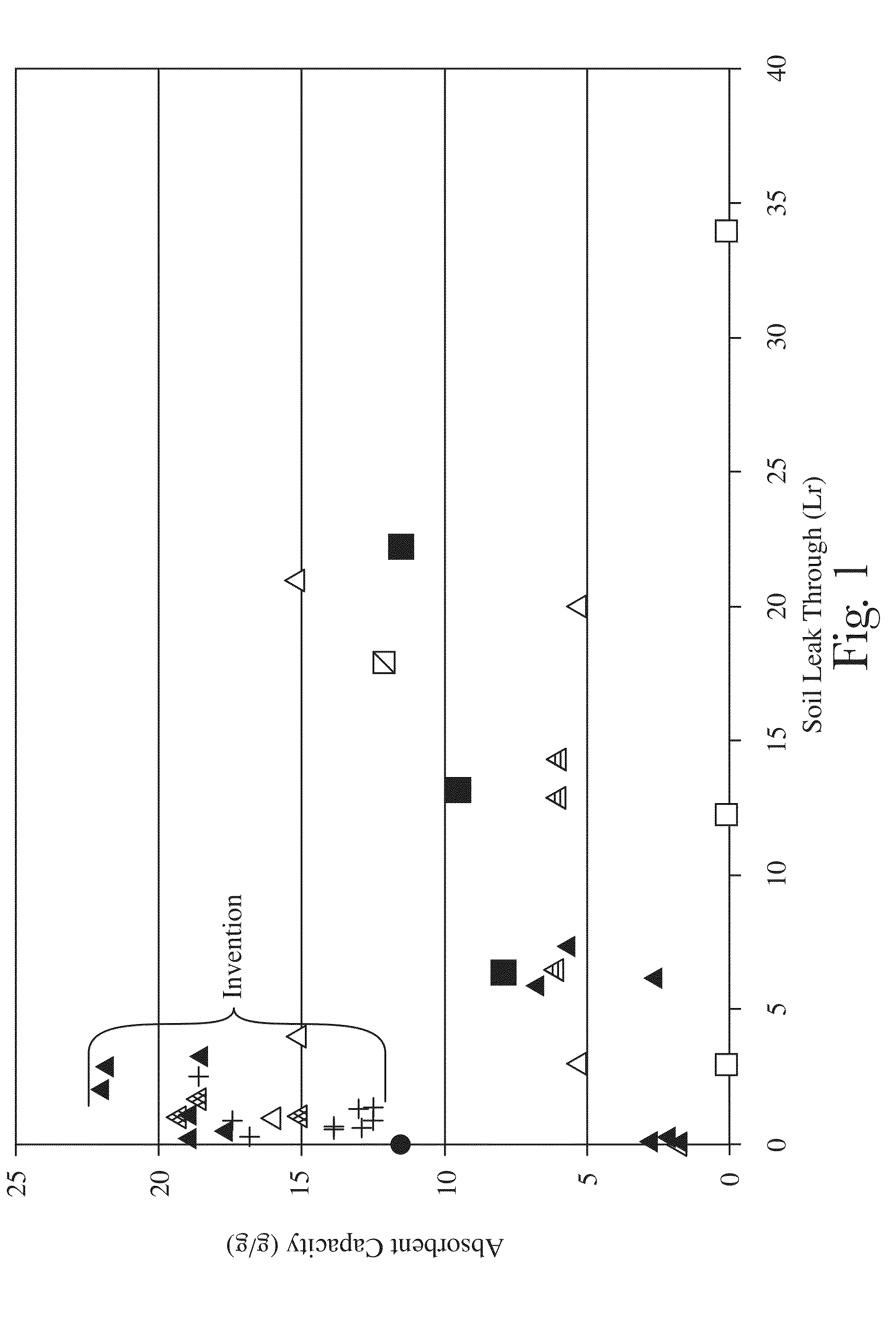Fibrous structures derived from renewable resources
- Summary
- Abstract
- Description
- Claims
- Application Information
AI Technical Summary
Benefits of technology
Problems solved by technology
Method used
Image
Examples
process example 1
[0205]A 95%:5% blend of bio-polypropylene:Polyvel S-1416 wetting agent is dry blended, to form a melt blend. The melt blend is heated to 475° F. through a melt extruder. A 15.5 inch wide Biax 12 row spinnerette with 192 nozzles per cross-direction inch, commercially available from Biax Fiberfilm Corporation, is utilized. 40 nozzles per cross-direction inch of the 192 nozzles have a 0.018 inch inside diameter while the remaining nozzles are solid, i.e. there is no opening in the nozzle. Approximately 0.19 grams per hole per minute (ghm) of the melt blend is extruded from the open nozzles to form meltblown filaments from the melt blend. Approximately 375 SCFM of compressed air is heated such that the air exhibits a temperature of about 395° F. at the spinnerette. Approximately 475 g / minute of Golden Isle (from Georgia Pacific) 4825 semi-treated SSK pulp is defibrillated through a hammermill to form SSK wood pulp fibers (solid additive). Air at a temperature of about 85 to 90° F. and a...
process example 2
[0208]A 95%:5% blend of bio-polypropylene:Polyvel S-1416 wetting agent is dry blended, to form a melt blend. The melt blend is heated to about 405° F. through a melt extruder. A 15.5 inch wide Biax 12 row spinnerette with 192 nozzles per cross-direction inch, commercially available from Biax Fiberfilm Corporation, is utilized. 64 nozzles per cross-direction inch of the 192 nozzles have a 0.018 inch inside diameter while the remaining nozzles are solid, i.e. there is no opening in the nozzle. Approximately 0.21 grams per hole per minute (ghm) of the melt blend is extruded from the open nozzles to form meltblown filaments from the melt blend. Approximately 500 SCFM of compressed air is heated such that the air exhibits a temperature of about 395° F. at the spinnerette. Approximately 1000 g / minute of Golden Isle (from Georgia Pacific) 4825 semi-treated SSK pulp is defibrillated through a hammermill to form SSK wood pulp fibers (solid additive). Air at a temperature of about 90° F. and ...
process example 3
[0211]A 95%:5% blend of bio-polypropylene:Polyvel S-1416 wetting agent is dry blended, to form a melt blend. The melt blend is heated to 475° F. through a melt extruder. A 10″ wide Biax 12 row spinnerette with 192 nozzles per cross-direction inch, commercially available from Biax Fiberfilm Corporation, is utilized. 32 nozzles per cross-direction inch of the 192 nozzles have a 0.018″ inside diameter while the remaining nozzles are solid, i.e. there is no opening in the nozzle. Approximately 0.17 grams per hole per minute (ghm) of the melt blend is extruded from the open nozzles to form meltblown filaments from the melt blend. Approximately 200 SCFM of compressed air is heated such that the air exhibits a temperature of 395° F. at the spinnerette. Approximately 175 grams / minute of Koch 4825 semi-treated SSK pulp is defibrillated through a hammermill to form SSK wood pulp fibers (solid additive). 330 SCFM of air at 85-90° F. and 85% relative humidity (RH) is drawn into the hammermill a...
PUM
| Property | Measurement | Unit |
|---|---|---|
| Length | aaaaa | aaaaa |
| Fraction | aaaaa | aaaaa |
| Fraction | aaaaa | aaaaa |
Abstract
Description
Claims
Application Information
 Login to View More
Login to View More - R&D
- Intellectual Property
- Life Sciences
- Materials
- Tech Scout
- Unparalleled Data Quality
- Higher Quality Content
- 60% Fewer Hallucinations
Browse by: Latest US Patents, China's latest patents, Technical Efficacy Thesaurus, Application Domain, Technology Topic, Popular Technical Reports.
© 2025 PatSnap. All rights reserved.Legal|Privacy policy|Modern Slavery Act Transparency Statement|Sitemap|About US| Contact US: help@patsnap.com



